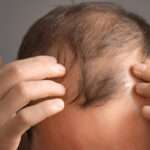Hair restoration can boost confidence and change how you see yourself. However, concerns about visible scars deter some people. In the UK, many patients considering a hair transplant Cardiff want reassurance about long-term appearance. Modern techniques reduce scarring, but a few simple steps make a big difference in your outcome.
Understanding why scars form
A hair transplant involves moving healthy follicles to new areas. Even with skilled hands, minor wounds are created. Your skin heals by forming new tissue, which sometimes shows as a scar. The type and size of scar depend on the method used. FUE creates tiny dot scars, while older FUT methods may leave a thin line. Most hair transplant Cardiff specialists now prefer FUE for its subtle results. Still, aftercare is key to minimising any marks.
Choose the right clinic and technique
Start with an experienced, GMC-registered clinic. Research hair transplant Cardiff centres that use modern FUE equipment. Ask to see real patient photos, focusing on donor and recipient areas. Surgeons with a light touch and deep experience know how to minimise trauma. Choosing the best clinic is the first step in reducing the risk of scars.
Follow aftercare advice to the letter
Your recovery plays a huge role in your final look. Listen carefully to your hair transplant Cardiff team. They will explain how to wash your scalp, which products to use, and when to return to daily life. Never pick at scabs or scratch the treated area. Let your scalp heal at its own pace. Sleep with your head raised to prevent swelling, and avoid exercise for the first week. Good aftercare stops wounds from reopening and supports smooth healing.
Protect your scalp from the sun
Newly treated skin is sensitive to sunlight. UV rays can darken scars and slow healing. Wear a loose hat or use high-factor sunscreen in the months after your hair transplant in Cardiff. Even on cloudy days, take extra care outdoors. Sun protection is a simple habit that can make a real difference to your results.
Nutrition and hydration for better healing
What you eat and drink impacts your skin’s recovery. A diet rich in protein, vitamins, and minerals helps your body heal wounds. Drink plenty of water. Avoid smoking, as it restricts blood flow and slows healing. Many hair transplant Cardiff specialists offer nutrition tips as part of your aftercare. Simple changes support smoother, faster recovery.
Watch for signs of infection
Infection is rare but can make scars worse if it happens. Watch for redness, swelling, or unusual pain. If you notice anything unusual, contact your hair transplant Cardiff clinic right away. Early treatment prevents minor issues from becoming larger problems. Don’t wait to see if symptoms pass on their own.
Avoid harsh styling products
Wait until your scalp has fully healed before using gels, sprays, or colouring products. Harsh chemicals can irritate new skin and increase the risk of scarring. Most hair transplant Cardiff clinics recommend fragrance-free, gentle products for the first month. Always check with your specialist before reintroducing styling habits.
Be patient with your progress
Healing takes time. Most redness and scabbing fade within weeks, but final results may take months to appear. Avoid touching or brushing the treated area too soon. Trust the process, and follow all advice from your hair transplant Cardiff team. If you’re worried about any marks or bumps, ask at your follow-up visit. Most minor scars fade naturally with good care.
When to consider extra treatments
If small scars remain after complete healing, ask your hair transplant Cardiff clinic about options. Some offer laser therapy, micro-needling, or topical creams to improve the look of scars. These treatments are rarely needed, but they’re available if you want further improvement.
Final thoughts
Preventing scars after a hair transplant is possible with the proper steps. Choose a skilled hair transplant Cardiff clinic, follow all aftercare, and give your scalp time to heal. With patience and good support, you’ll enjoy natural results and minimal marks—helping you feel confident in your new hair for years to come.






